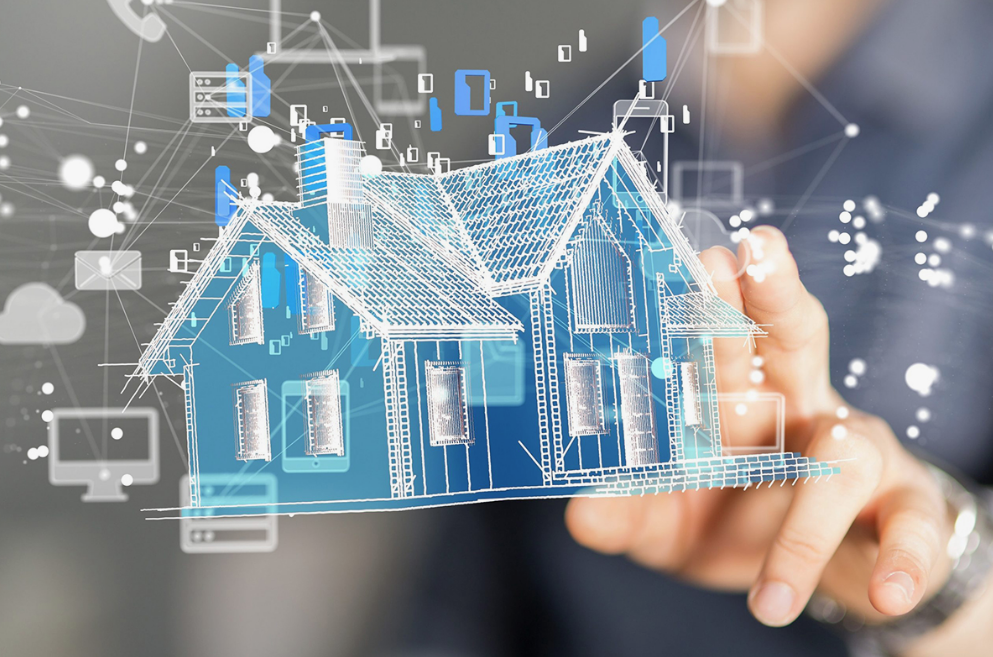As technology advances, the idea of a “smart home” powered by AI is becoming more of a reality. Picture a home where everything from your lights and thermostat to your security system and even your smart PC is connected and works together to make life easier.
Your smart PC could learn your work habits, your thermostat would adjust the temperature when you’re near, and your lights would change based on the time of day—all automatically. While this may sound like a futuristic dream, implementing AI in smart homes and SMEs still presents several challenges.
The global Artificial Intelligence in Smart Home Technology Market size was valued at USD 11.24 billion in 2022 and is projected to expand at a compound annual growth rate (CAGR) of 21.9% during the forecast period, reaching a value of USD 52.10 billion by 2030.
For example, what if your devices don’t communicate well with each other or your smart PC misunderstands a command? These issues can make the promise of a fully integrated, intelligent home feel out of reach.
Let’s discuss the challenges of implementing AI in smart home technology.
1. Connecting Different Devices
One of the biggest challenges inothersme is getting different devices to work together. Many people use products from different brands, such as smart thermostats, lights, and locks. However, these devices don’t always communicate with each other, which makes it hard to create a truly connected home. For example, the house adjusts the temperature in devices, but your security camera doesn’t get that signal, and your home automation won’t work much.
Each smart device often comes with its own platform, meaning that devices from one company may not work with devices from another. This makes it harder to create a system where everything works together automatically.
Accessing companies need to create universal standards so that devices from different brands can communicate with each other. As technology develops, more devices are becoming compatible, making it easier for users to connect everything. Apart from remote, these AI-based home devices can also be handled through smart PC.
2. Privacy and Security Concerns
AI-powered smart home devices use a lot of personal data to learn your home habits and preferences and even listen to add these concerns to your conversations. While this makes them more convenient, it also raises privacy and security issues. Imagine a hacker gaining access to your smart camera or TV and spying on your home when you’re not there.
Despite the security measures that companies implement, like encryption, smart devices can still be vulnerable to attacks, especially if they aren’t updated regularly. This means that your ion may need help, a major concern for many users.
To address these concerns, companies must use stronger security systems, such as encrypting data and requiring two-factor authentication. They also need to be clear about how they collect, use, and store your data. As a user, you should also take steps to protect your devices, like updating software regularly and being mindful of what data you share.
3. User Experience and Complexity
While AI is meant to make life easier, setting up and using smart devices can sometimes feel too complicated. Many people find it difficult to set up a system where everything works together smoothly. For example, a smart thermostat might need time to learn your schedule, and during that time, it might not always adjust the temperature correctly. Similarly, a voice assistant might misunderstand your command and do something unexpected, like turning on the TV instead of the lights.
If the devices are too complicated or don’t work as expected, people might feel frustrated, and the promise of a “smThe total cost can quickly add up for” home could feel more like a hassle.
Their devices are easier to set up and use. The goal should be to create a smooth experience where devices learn from your actions over time and get better at anticipating your needs. Simpler designs and clearer instructions can help users feel more comfortable with the technology.
4. Cost and Accessibility
One major problem with AI in smart homes is that the technology can be expensive. Many smart devices, like AI-powered thermostats, security cameras, and lights, can cost hundreds of dollars. For a person trying to create a fully automated home, the total cost can quickly add up. This makes it difficult for many people, especially those on a budget, to afford these smart home upgrades, but many challenges still require ongoing payments. There’s much to work on, from cloud storage to software updates.
This can make owning a smart home longer and more common, and the prices of devices will likely go down with continued development and improvement. Companies could also offer a range of devices at different price points, making it easier for more people to get started with smart home technology. They could also provide payment plans or bundles to help make the devices more affordable.
Conclusion
AI in smart home technology is exciting, but there are still many challenges that need to be addressed. From connecting devices to protecting privacy and making the technology more affordable, there’s a lot to work on. However, with continued development and improvement, these issues can be solved, making smart homes more reliable, secure, and accessible for everyone.

